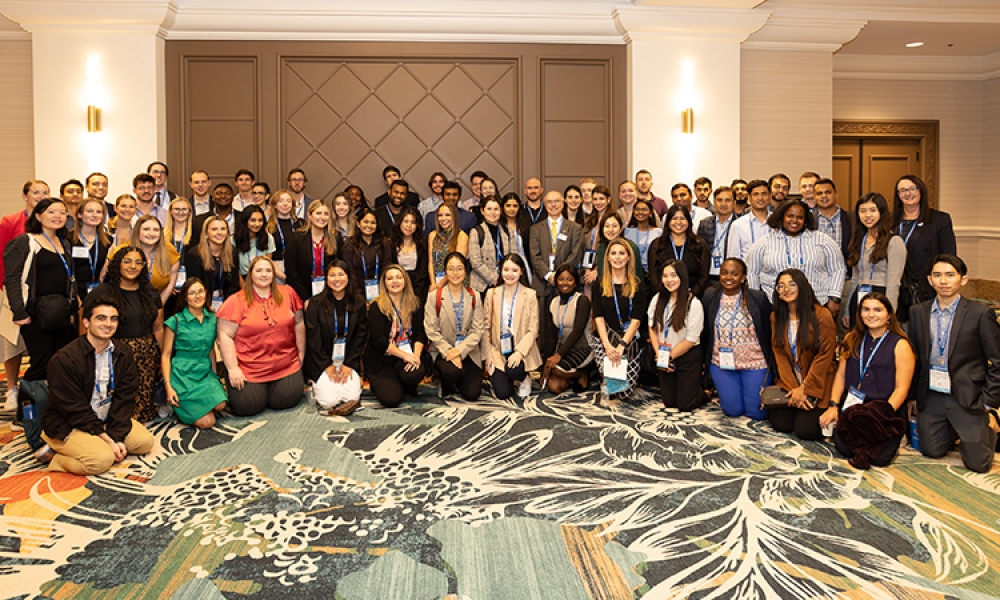Development of a suitable vaccine candidate was a widely discussed challenge, but it only represented half the story. How to manufacture and deliver a vaccine at scale and pace for the world was the less understood other half of the story. Even though multiple vaccines from a variety of different producers have been delivered to nations across the world, many issues are still impacting production outputs. Which is why the industry must learn the many lessons from this experience—including those related to vaccine facility design and delivery and operation—in order to be able to respond much more effectively to future pandemics.
Vaccines Manufacturing and Innovation Centre (VMIC)
One approach to dealing with future pandemics is that offered by the UK’s new Vaccines Manufacturing and Innovation Centre (VMIC). Taking on board the challenges presented at the start of the pandemic, the facility had to rapidly change to meet the needs of the UK in the fight against COVID-19. This involved fast-tracking the facility to be operational a year ahead of schedule, changing the model from focusing on one vaccine platform to becoming technology agnostic, and increasing pandemic response capacity 20-fold to be able to manufacture 70 million doses within a six-month timeframe. With VMIC now established to benefit the international community through being a highly specialist one-stop-shop for vaccines manufacturing, it is being used as a model for governments around the world looking for a long-term solution and powerful response capability against future pandemics.
Master Planning the Future – The Need for Advancement
It can be argued that the pharmaceutical industry is changing at its fastest rate in decades. This is driven in part by the requirement to manufacture new process modalities, as well as the need to deliver new facilities in a quicker and more cost-effective manner. Furthermore, growing demand for more flexible, adaptable and sustainable facilities, together with the advancement of new processing and Pharma 4.0™ technologies such as digitization and robotics, requires that Site Master Planning needs to advance in order for manufacturing sites to fully accommodate and exploit the benefits these changes will bring.
The potential impact on sites will be significant. For example, transforming a drug substance production site with multiple production lines from traditional stainless technologies to single-use technologies will have large implications on aspects such as utility generation and distribution, logistics storage and movements, and both solid and liquid waste handling. Warehouse requirements may increase significantly to accommodate the storage of single use components. The management and disposal of single-use solids waste could become a considerable task, particularly when trying to meet ever demanding sustainability targets.
Adapting a flexible facility to a different process platform in a short time means that space needs to be provided for out-of-service equipment. The provision for the use of autonomous logistics vehicles has implications on aspects such as corridor widths, floor gradients and the provision of battery charging stations. It is predicted that production robots will have an increasing impact on FTE numbers, which will have a corresponding impact on demand for various spaces such as for car parking, office space, and lockers.
The increasing use of on-line and at-line testing is also having an impact on QC laboratory sizing, which may require significant less space in 20 years-time. Additionally, the awareness that an organization’s employees are one of its most important assets means that architects need create “Well Building Design,” which are great working environments that both attract and retain staff. Consequently, site leadership teams need to plan appropriately for potential site changes. One important aspect is to produce a Site Master Plan, which is a living document that is managed and regularly reviewed. This is important not only in defining current and future requirements, but with current digital and 3D tools, it makes it possible to display information and communicate within organizations to ensure that the leadership site vision is understood, shared and embraced.
During the 2022 ISPE Facilities of the Future Conference session “Emerging Technologies I, ” Matthew Duchars, PhD, CEO, VMIC, will give attendees an inside look into how the new VMIC in the UK responded to pandemic challenges and how its design basis changed to become platform and technology agnostic with the ability to ramp capacity 20 fold with a six-month timeframe. Additionally, Jessica Hays, Project Manager, Strategic Projects, Bayer, and Jordaan Kemp, Director of Architecture, PM Group, will share their expert insights on site master planning the future and how it should adjust to accommodate new process modalities, delivery methods, and Pharma 4.0™ technologies.
Register for the 2022 ISPE Facilities of the Future Conference to explore advancements in pharmaceutical technologies and see what pharmaceutical manufacturing facilities will look like in the future. Network and learn from industry leaders already planning and building “facilities of the future” as they share insights into new manufacturing challenges, technologies, and regulatory factors impacting the ability of today’s companies to stay competitive and cost-effective.
Register Today!





